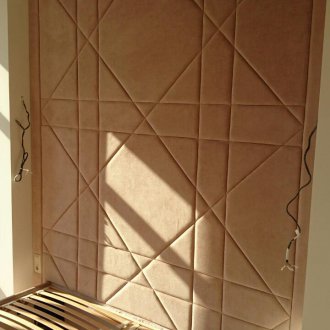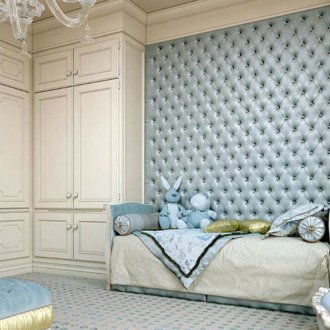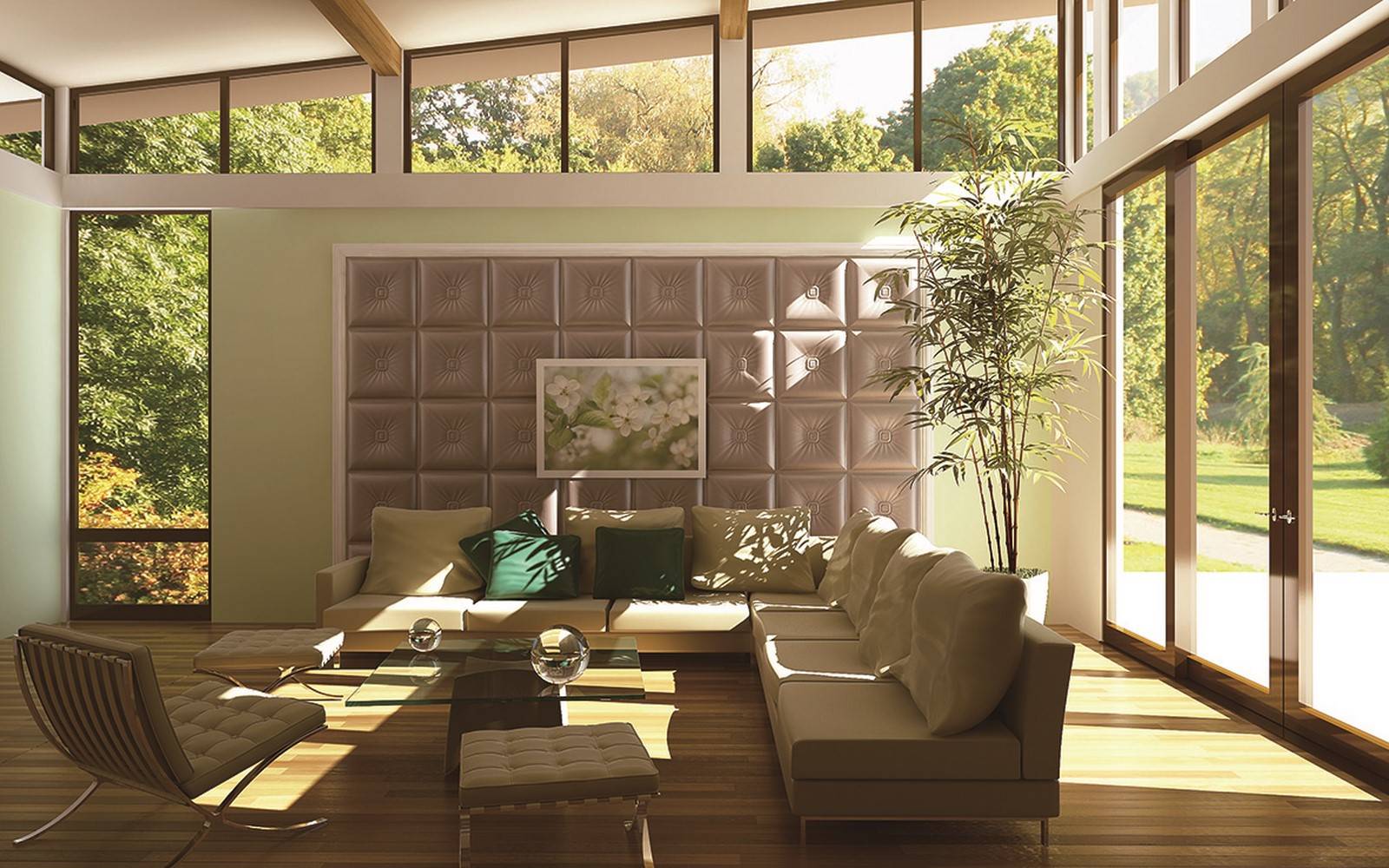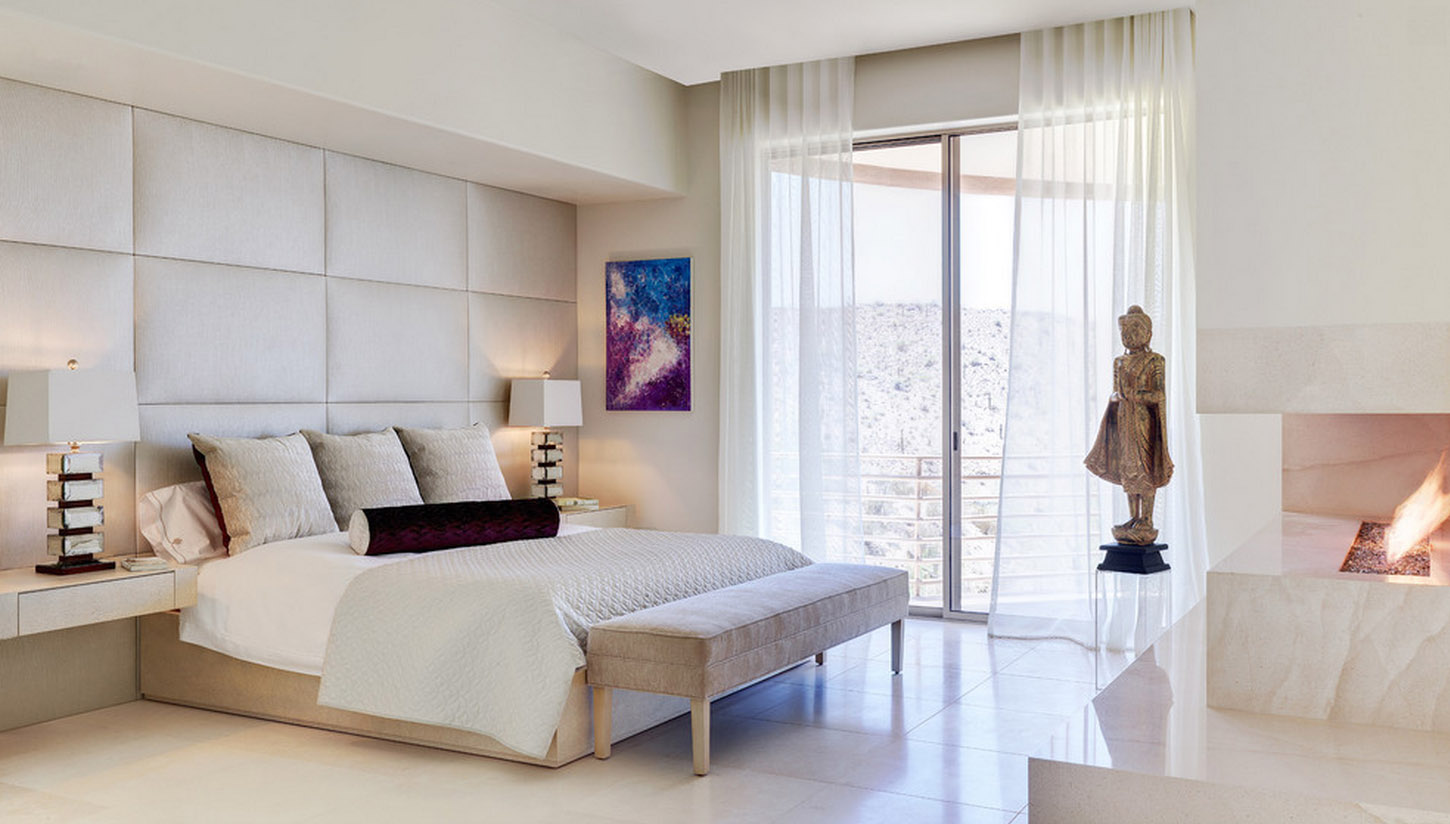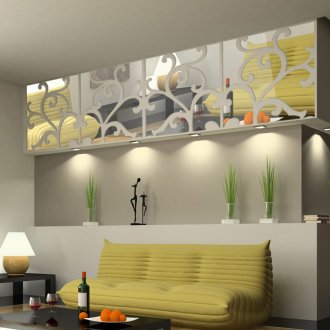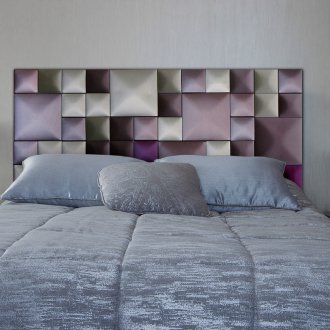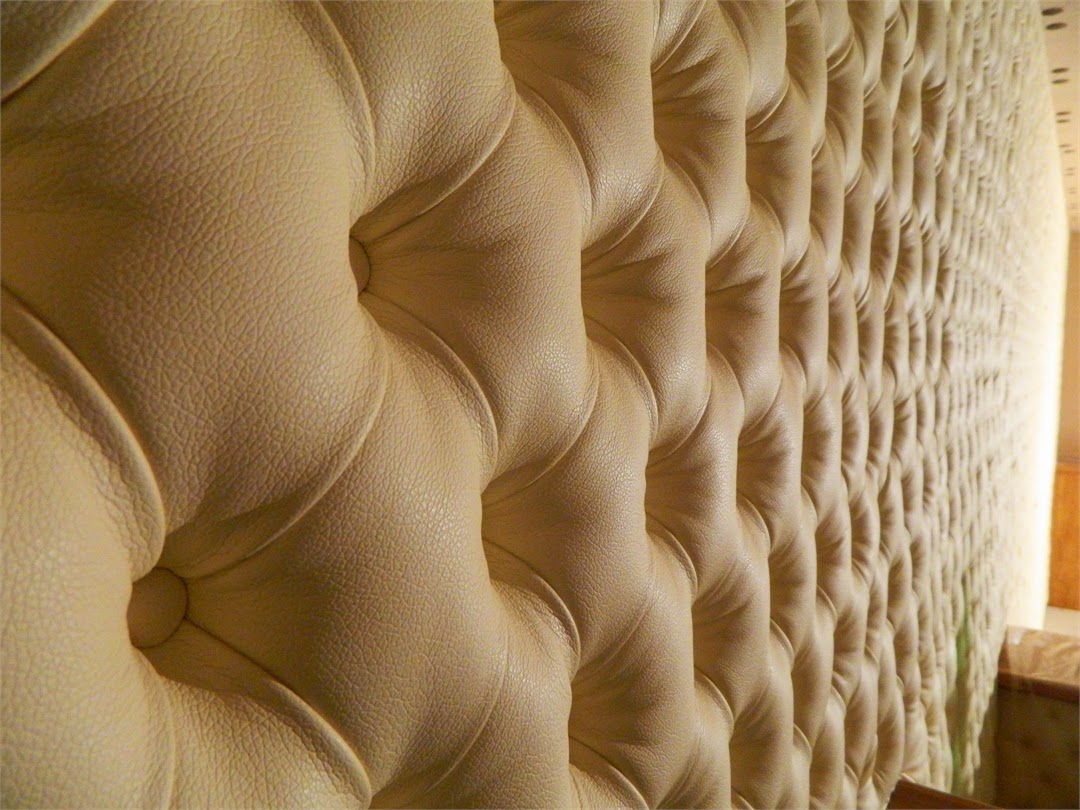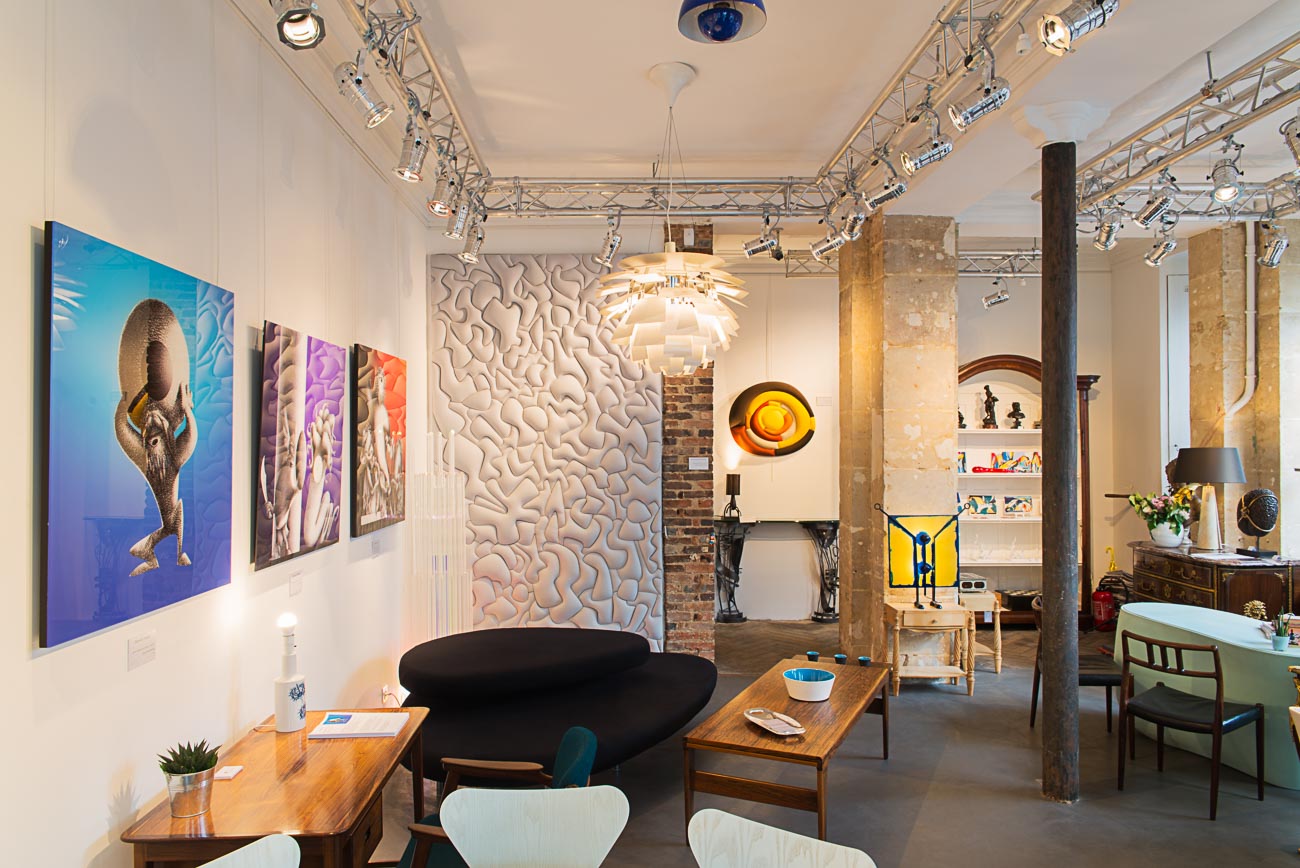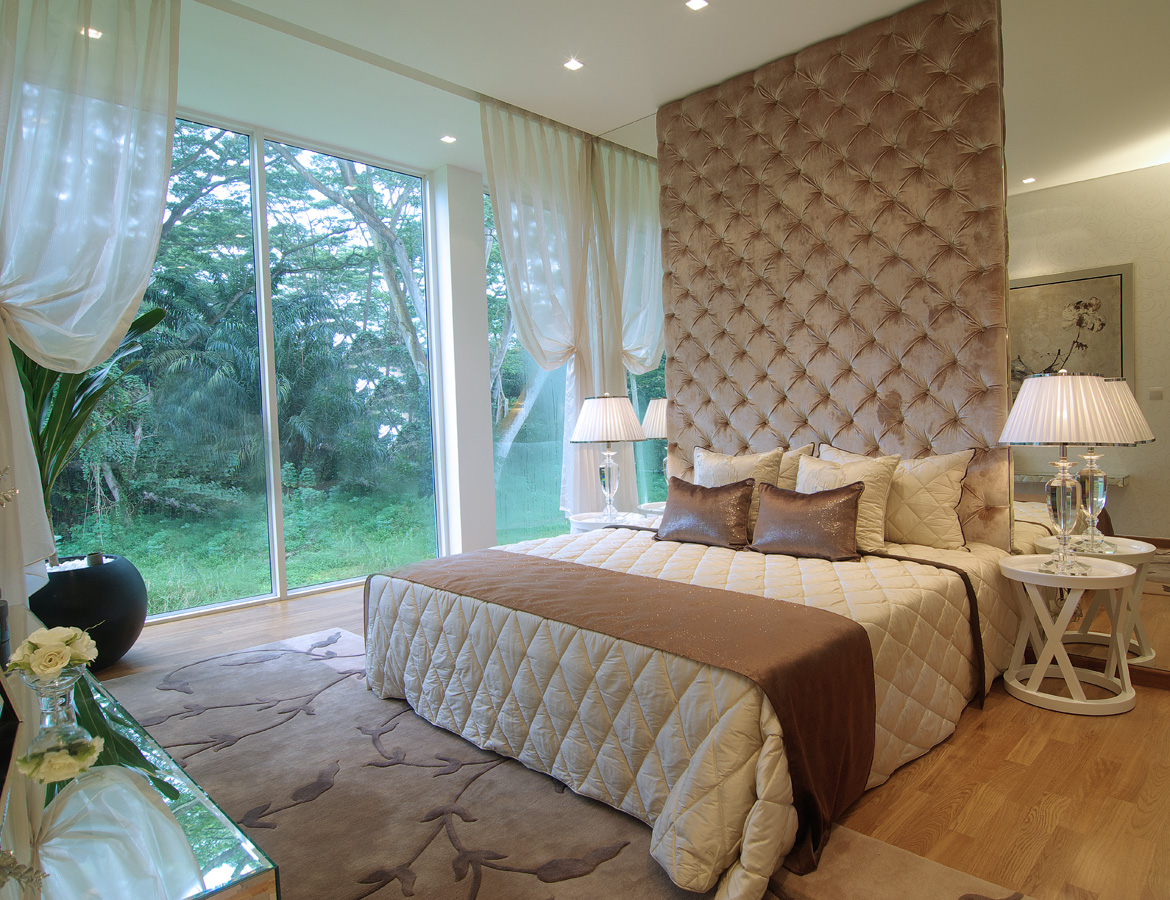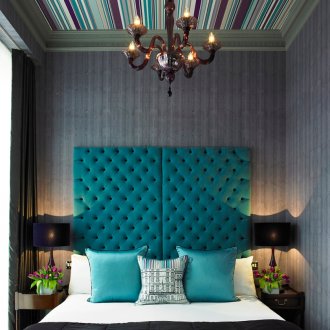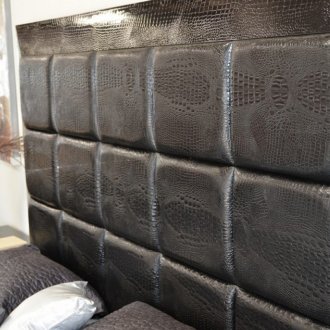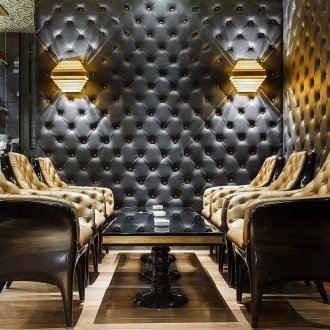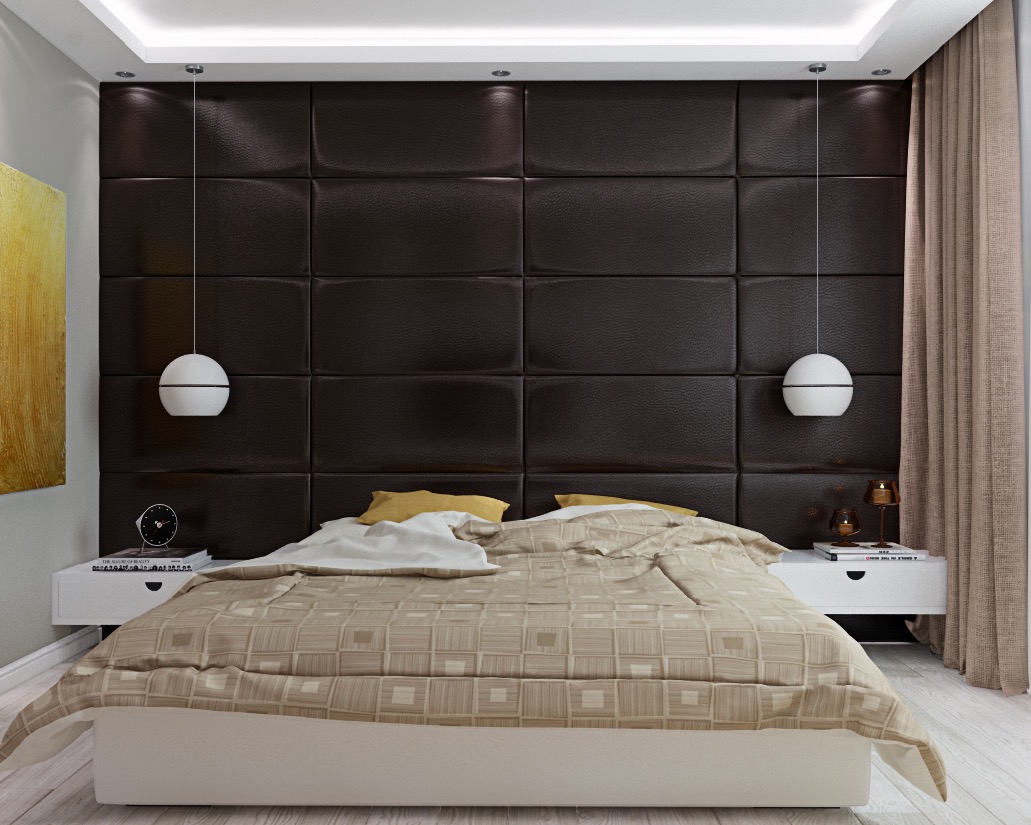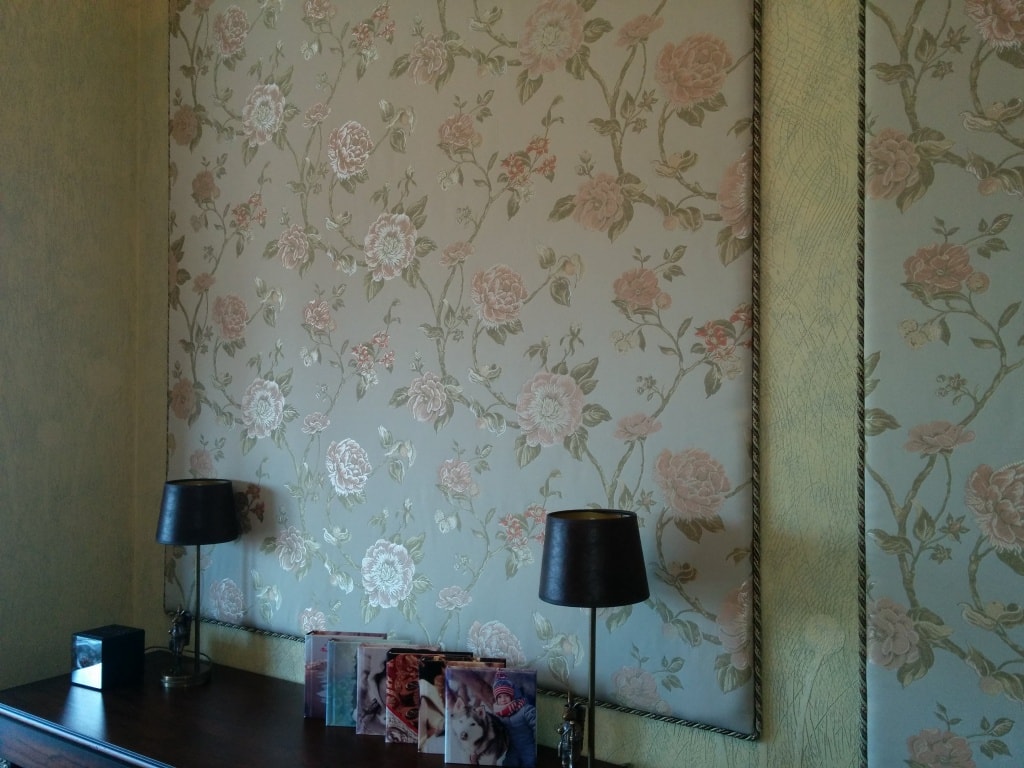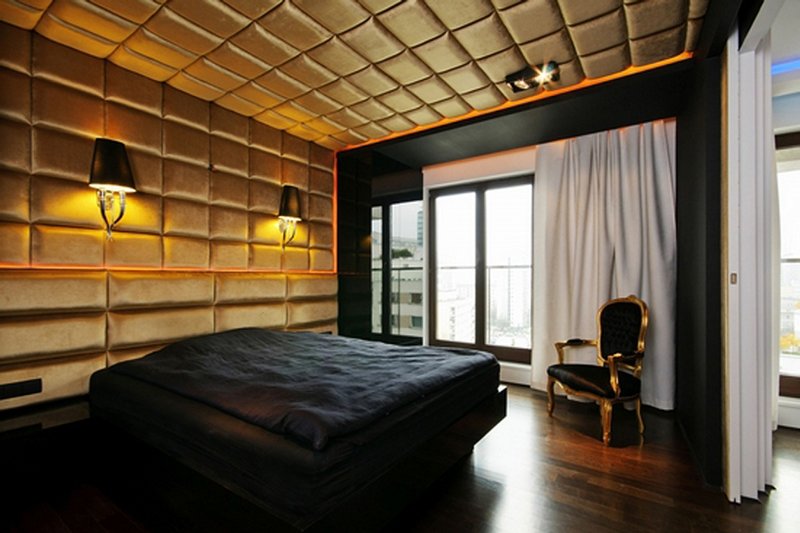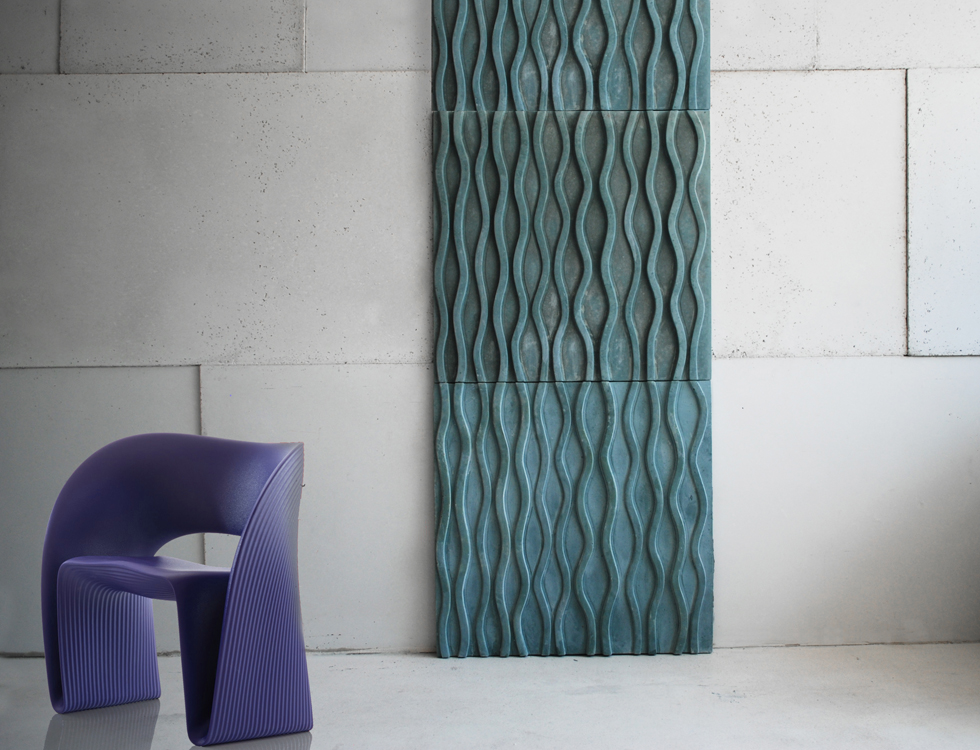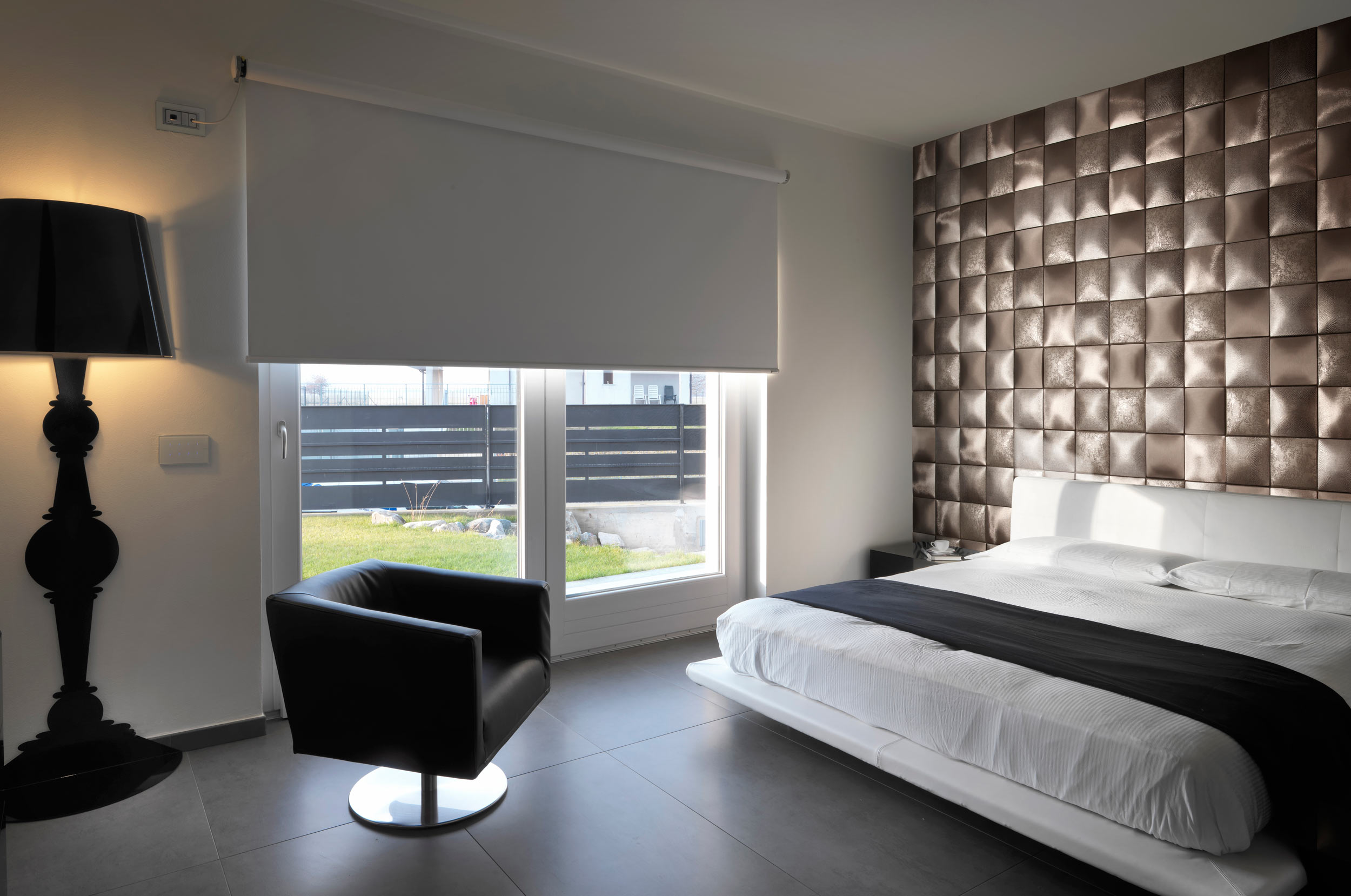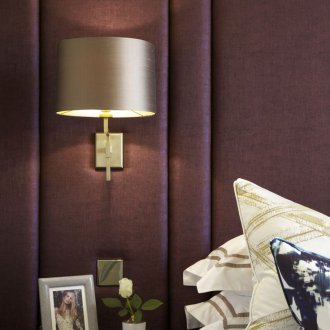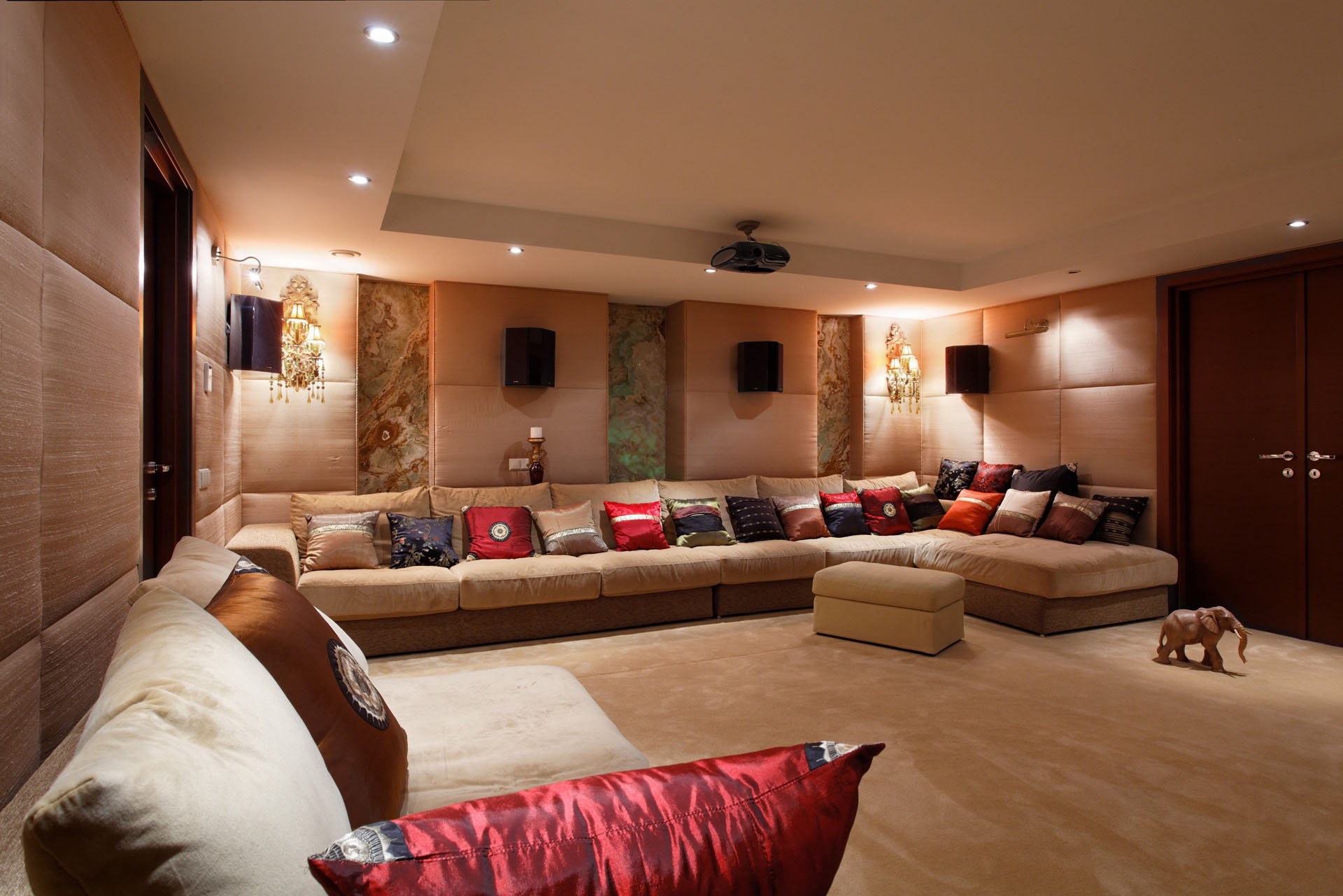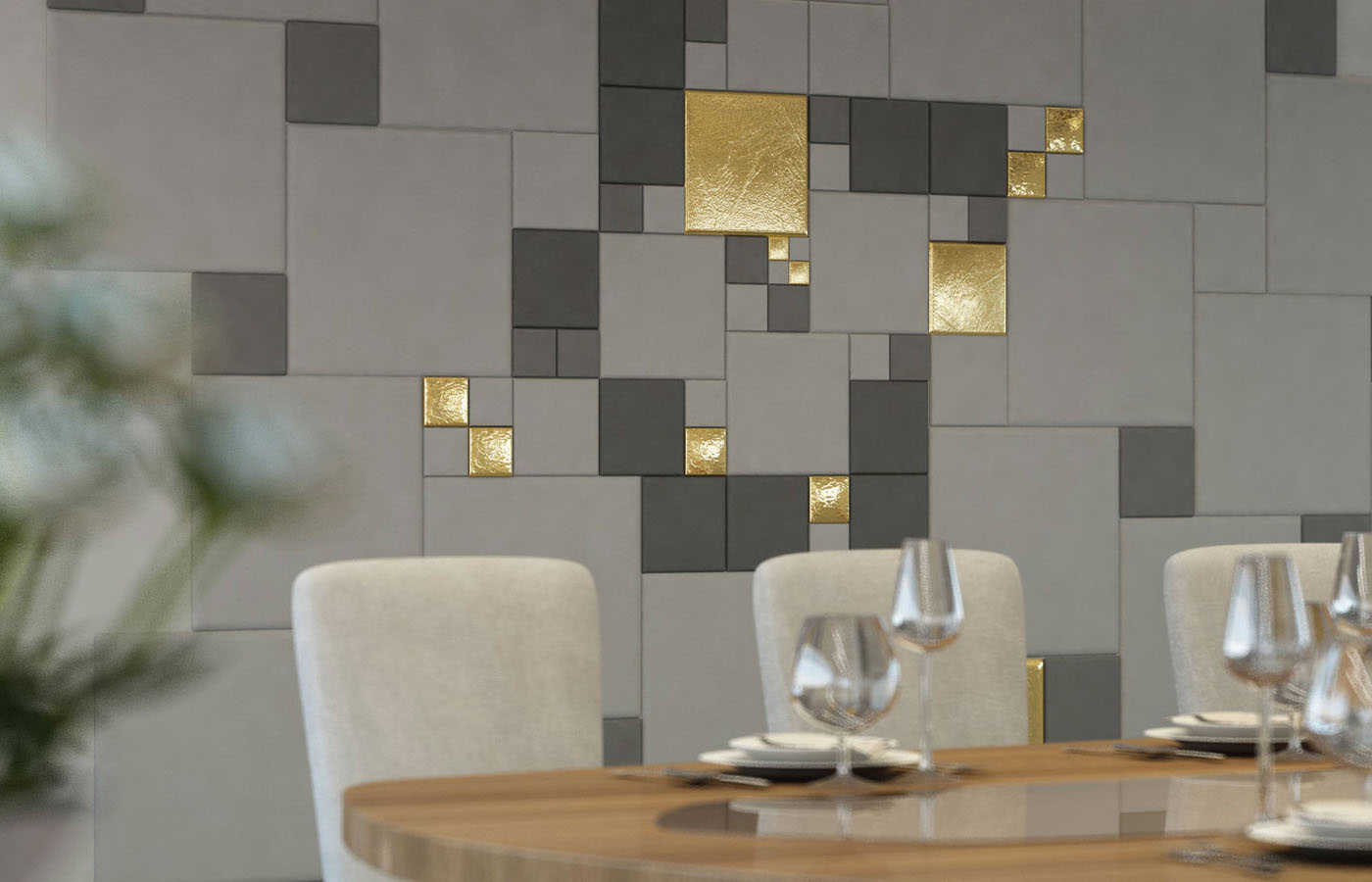Soft wall panels: security at every corner (23 photos)
Content
Today there are many options for decorating the walls of rooms in any stylistic direction. One of them is the upholstery of the walls with soft panels.
Designers argue that soft wall upholstery is a simple solution and an interesting idea. In addition to the aesthetic appearance, when finishing in this way, noise insulation and thermal insulation increase.
Types and features of soft panels for walls
Soft wall panels are made of various materials. To create a stylish interior, two main types are used.
Leather panels
Made of genuine leather and its substitutes. In the first case, finishing with such panels is considered an expensive option. In the interior, these walls go well with plain tones of calm or bright colors, furniture made of genuine leather or wood. Upholstery of walls with faux leather panels is a less expensive option, but in appearance it is practically not inferior to genuine leather.
Leather panels look impressive, refined, and easy to clean.
Fabric panels
They are considered a universal solution for interior decoration. They can be made of silk, linen, viscose, jacquard, suede, velor and other types of fabrics. They have many color options, selected depending on the design of the room.
All soft panels are divided into small ones with an area of 0.4x0.4 sq.m., large samples with an area of up to 1.5 sq.m. and those that completely cover the surface of the wall. Small panels are fixed to the wall, and the formed joints between them are sealed with decorative overlays.
All types of panels are made for long-term use. They can produce wall decoration in the bedroom, living room, nursery and even in the corridor, choosing the right style, density, color.
Soft wall panel structure
Due to their volumetric shape, such panels are called 3D panels. They have a multilayer structure and in the context look like this:
- the first layer is made of a PVC substrate with a width of 5-8 cm, which has high adhesive properties to various adhesive substrates and increased strength;
- the second layer is presented in the form of a filler made of foam, sinteponovogo or mineral wool base, serves to retain heat and sound;
- the third layer is made of upholstery material and is responsible for the decorative characteristics of the panels.
Thanks to this composition, soft wall panels are wear-resistant, beautiful and have important indicators - noise insulation and thermal insulation.
Advantages and disadvantages of soft wall panels
When carrying out repairs in a residential building, the reliability and durability of the building materials used are taken into account. The decoration of the walls with soft panels has the following positive aspects:
- Good air and moisture permeability. With these characteristics, the room maintains optimum temperature and humidity.
- The ability to clean and wash the walls.
- The use of soft wall panels will add gloss, luxury and personality to the interior of the room.
- High resistance to mechanical loads of a different nature.
- Soft wall panels for the bedroom with a relief pattern can be used in any stylistic directions: baroque, hi-tech, art deco and modern.
- Long-term use, high wear resistance. The term of use of soft panels reaches up to a quarter of a century.
- Excellent noise and heat insulation properties.
- Safe for humans. When heated, do not emit toxic substances, are not prone to fire.
- Large selection of color palette and style.
- Easy and quick installation. It does not require special skills and knowledge. Laying wall panels can be carried out even by an inexperienced craftsman.
- No need to pre-prepare the surface of the walls before installation.
- An opportunity to hide having roughnesses and defects of walls, and also various wires and communications.
- While maintaining the appearance, the dismantled soft panels can be used repeatedly.
An important point is that the use of soft wall panels is provided for spacious rooms. When decorating walls in small rooms, designers recommend using them on separate surfaces, introducing uniqueness and originality into the interior.
The disadvantages of such panels include a high price per unit product. This is especially true for panels with genuine leather upholstery. The use of tissue materials is unacceptable in case of allergic reactions in humans to dust.
Interior with soft wall panels
There are many design solutions using soft wall panels. For example, with decorative panels, you can sheathe the entire wall, some of it, or all existing walls in the renovated room.
Very often, the headboard and podiums are trimmed with soft upholstery. Decorative panels can be chosen in tone with other finishing materials or used for bright highlighting in the interior. Soft panels with fabric texture can be decorated with an exclusive image created by digital photo printing on fabric.
A good solution is to design soft rooms for children. With the help of them, the nursery’s interior will look cozy and beautiful, and the likelihood of injuries in children playing gambling and outdoor games will also decrease. In addition, soft panels have good sound insulation, which is important for a children's room.
Also, wall panels are suitable not only for residential premises, their use will be appropriate in cafes, restaurants, cinemas, karaoke bars, hotels and other places.
When designing the premises, panels of various shapes and sizes are used, they can be convex or smooth. Foam-filled panels are in greater demand. The use of each type of panel depends on the stylistic orientation and design ideas.
Fixing decorative panels
In order to fix the wall panels do not need to have certain knowledge and skills. The main nuance that must be taken into account when placing the panels and their further fastening is the exact marking of the wall. This will avoid distortions in horizontal or vertical lines.
There are two ways of attaching soft decorative panels to the wall: fixing the panels to the wall by gluing them and covering the frame, which is previously fixed to the wall.
The execution algorithm of the first method:
- Before starting work, it is necessary to plaster and prime the surface of the wall to improve its adhesion to the finishing material.
- Having chosen the spatial arrangement of the panels, make the corresponding marking with a pencil on the wall.
- Lubricate the inside of the soft panels with zigzag glue PVA and apply tightly to the marked surface. Panels can be mounted in any direction: from left to right, from bottom to top. If the wall will be sheathed to the ceiling, then experts recommend mounting panels from top to bottom.
- To get the required dimensions of the side panels, you can cut them with a hacksaw.To do this, you need to remove some of the material, saw off a solid base in size, sticking the place to cut with tape, and wrap the excess material on the inside.
- In order not to spoil the aesthetic appearance of the panels, you can place them on the wall, without bringing to the corners. This will avoid trimming them. In this case, you need to take into account the fact that the distance between the extreme panels and the angle should be equal on all sides of the finishing surface of the wall.
This method of attaching soft panels to the wall is very simple. Compliance with all positions will ensure fast and quality execution.
The execution algorithm of the second method:
- Make a frame from prepared rails, corners and screws.
- Nail the plywood sheets around the entire perimeter of the fabricated frame on the front side. Then stick the base on it - synthetic winterizer or foam rubber.
- Tighten the panels tightly with fabric, leaving allowances that are fixed with a construction stapler on the other side of the frame.
- Nailed furniture nails to beat to the crate, mounted on the wall. To prevent damage to the material on the nails, it is recommended to put a synthetic winterizer, on which the nail will be driven.
Fastening of soft panels to the wall with dowels is less common, since this method is suitable for working with soft wall panels for the bedroom, the thickness of the substrate of which is within 3 centimeters.
The choice in favor of soft panels for walls will make the room cozy, give originality and exclusivity. You can contact the designers or decorate the interior as you wish. In any case, the walls decorated with soft panels will look spectacular.
